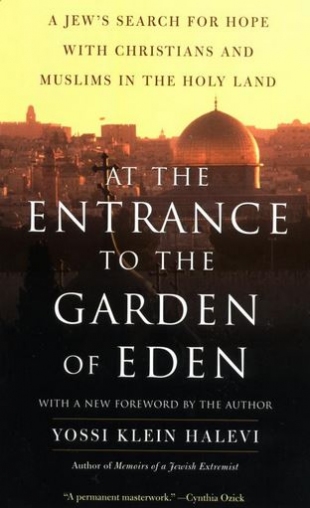"In early winter 1998, I set out to discover my country, the Holy Land. My pilgrimage was an attempt at religious empathy: I was hoping to encounter, as an Israeli Jew, my Christian and Muslim neighbors in their intimate devotions. For the next two years, through the turn of the millennium, I visited monasteries and mosques and holy sites, discovering hidden corners of this land. My sense of sacred time expanded to include Christian and Muslim holidays, which I tried to experience in the company of monks and nuns and Islamic Sufi mystics.
"My intention wasn't to blur the differences between the faiths but to discover points of commonality. Nor was I seeking complex theological exchanges, which in any case were beyond my expertise as a journalist. Instead, I wanted to test whether faith could be a means of healing rather than intensifying the conflicts in this land. My hope was to pray and meditate with my Christian and Muslim fellow believers. That approach was a conscious refutation of the way we religious people of different faiths have always judged each other — by what we believe about God, rather than how we experience God's presence. Theology distinguishes between truth and untruth; prayer knows only different measures of depth.
"I approached this journey with two spiritual commitments. I am a religious Jew for whom the Jewish story, from the ancient exodus from Egypt to the modern return to Israel, is the context in which I try to encounter the miraculous. And I am a religious pluralist who believes that all the great religions are in effect denominations in one great religion, which teaches the primacy of the unseen over the visible and of unity over fragmentation. For me, the test of whether a religion is true is in its capacity to turn ordinary people into decent believers and extraordinary people into saints whose presence affirms the reality of God. By that measure, Christianity, Islam, and Judaism — and Hinduism and Buddhism — are all true faiths, regardless of their conflicting theologies."
